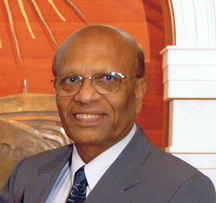Having differences in the family on personal and economic matters is part of being human. There is nothing strange about it. After all, each soul and human being is different; different upbringings, environments, and circumstances - and hence reactions and behaviors to the same situations are going to be different. What is important here is how we resolve those issues and conflict: do we resolve using violent means (fighting, abusing, name calling, hiring goondas, going to court) or do we solve those differences amicably, honestly, truthfully, without malice and using ahimsatmak (non –violent) means. I have noticed that the use of himsak (violent means) is slowly becoming more prevalent than the ahimsatmak (non–violent) approach. Here, Jains are no different than the rest of the folks around. Let me illustrate this with two following examples.
A few years ago, one non-Jain swami-ji was on a train in India from Ghaziabad to Old Delhi station. Seated next to him was a young man (a Hindu) who was in his early thirties. This young man was reading “Ram Charitra Manas,” a holy and pious book about how Lord Rama treated his younger brothers Lakshman and Bharat and how they both in turn treated Lord Rama. Seeing the holy monk, this young man bowed and touched his feet to pay his respects to the swami- ji. Swami-ji noticed that this young man was reading “Ram Charitra Manas,” and asked him “Are you going to Delhi just for fun or for some business?”
The young man replied that he was going to Delhi to the District Courts there because he and his older brother have a legal dispute which had been going on for several years regarding some parental land and property. Hearing this, Swami-ji told the young man that he was reading the wrong book. Instead of “Ram Charitra Manas,” he should be reading “Mahabharata,” the book of great wars and fights. We see here a big disconnect in talk and walk. The young man had a legal fight going on and had lots of anger and animosity (feelings of himsa) towards his brother, but on the other hand, just to show off, he was reading “Ram Charitra Manas.” The two don’t go together. If he believes in “Ram Charitra Manas,” then he should take steps to resolve issues and conflicts with understanding and fairness. This is the ahimstamak way.
 Dr. Sulekh Chand Jain
Dr. Sulekh Chand Jain
